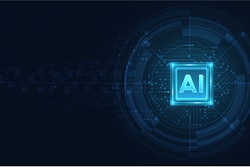
The complexity of modern supply chains has reached a critical point. With global networks spanning multiple systems, data sources, and stakeholders, organizations face unprecedented challenges in making timely, informed decisions. While data availability has grown exponentially, the ability to transform this data into actionable insights hasn't kept pace. A new solution is emerging in the form of AI agents, serving as intelligent translators between complex data and business decisions.
2025 is being hailed as the ‘year of agents’ by the world’s biggest tech companies including Nvidia and OpenAI. AI agents represent a fundamental shift from traditional automation tools. These specialized digital systems can autonomously handle complex analytical tasks while collaborating with each other and human experts. Unlike simple automation tools that follow predefined rules, agents can learn, adapt and handle nuanced decision-making across the supply chain.
The Potential Impact of AI Agents in Supply Chain
Data Integration and Analysis
Supply chains generate data across multiple systems - from ERP platforms to market data to macroeconomic indicators. While all this data could improve decision-making, organizations struggle to harmonize it effectively.
AI agents can provide a layer of automation that continuously harmonizes this data, automatically handling unit conversions, mapping product codes, and integrating external data sources. This allows supply chain teams to focus on making decisions rather than spending weeks reconciling data formats.
Speed Through Automation for Better Resiliency
The COVID-19 pandemic exposed how critical speed of decision-making is in modern supply chains. While traditional automation helps with routine tasks, AI agents can transform the speed and scale at which organizations can analyze situations and make decisions.
Consider a global manufacturer facing a 60% capacity reduction from a key semiconductor supplier. Instead of spending weeks gathering data and evaluating options manually, AI agents can immediately analyze the situation across multiple dimensions: mapping current inventory positions, identifying available capacity at alternative suppliers, simulating different production scenarios, and calculating the cost implications of each option. What traditionally took weeks can now happen in hours.
The impact can extend beyond crisis management. In day-to-day operations, agents can continuously monitor and adjust to changing conditions - reconfiguring production schedules based on real-time demand signals, optimizing delivery routes based on current bottlenecks and reallocating inventory across the network. This enables supply chain teams to shift from reactive response to proactive optimization.
Democratization of Insights
Today, sophisticated supply chain analysis remains the domain of specialists and data scientists. AI agents fundamentally change this by making complex analysis accessible to business users through natural language interactions.
This natural language interface, combined with agents' analytical capabilities, transforms supply chain planning from a periodic, specialist-driven exercise into an interactive process where decision-makers can explore scenarios and get instant, comprehensive analysis.
Granular Intelligence at Scale
In traditional supply chain operations, organizations face a constant trade-off: they can either analyze a few products in detail or many products superficially. AI agents eliminate this compromise by enabling both breadth and depth of analysis simultaneously.
Consider a global retail chain envisioning a transformation in its planning processes. Historically, planners might focus detailed analysis on top-selling products in major markets, applying generic forecasting rules to everything else. With AI agents, they could analyze every product in every location with the same depth. For instance, while planning a winter clothing line, agents could simultaneously process:
- Store-level historical sales for each size-color combination
- Local weather forecasts and seasonal patterns
- Pricing and promotion data from neighboring competitors
- Social media sentiment by region
- Local events and school calendars that might impact shopping patterns
When demand patterns shift, agents wouldn't just flag the change—they could trace its implications across the supply chain. A trending color in one region might prompt adjustments to production schedules, reallocation of raw materials, and updates to distribution plans. This granular optimization would occur continuously across thousands of products and hundreds of locations.
Most importantly, this granular intelligence would not come at the cost of holistic understanding. While optimizing store-level inventories, agents would maintain awareness of network-wide constraints and objectives, ensuring that local optimizations align with global efficiency goals.
The Path Forward
As supply chains continue to grow in complexity, AI agents offer a practical way to handle this complexity while maintaining business context and human oversight. Organizations can start by identifying specific areas where agents can add immediate value - whether in demand planning, inventory optimization or procurement.
The key to successful implementation lies in maintaining business context. AI agents should be grounded in domain knowledge, business rules and physical constraints while being flexible enough to adapt to changing conditions. This ensures their recommendations are both innovative and practically feasible.
The future of supply chain management lies not in replacing human expertise but in augmenting it with AI agents that can handle complexity at scale. As these technologies mature, organizations that effectively integrate AI agents into their operations will be better positioned to handle the challenges of modern supply chain management.

















